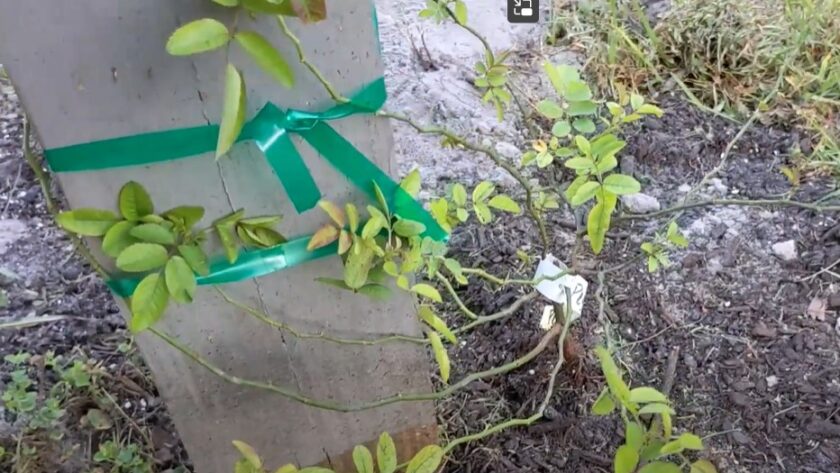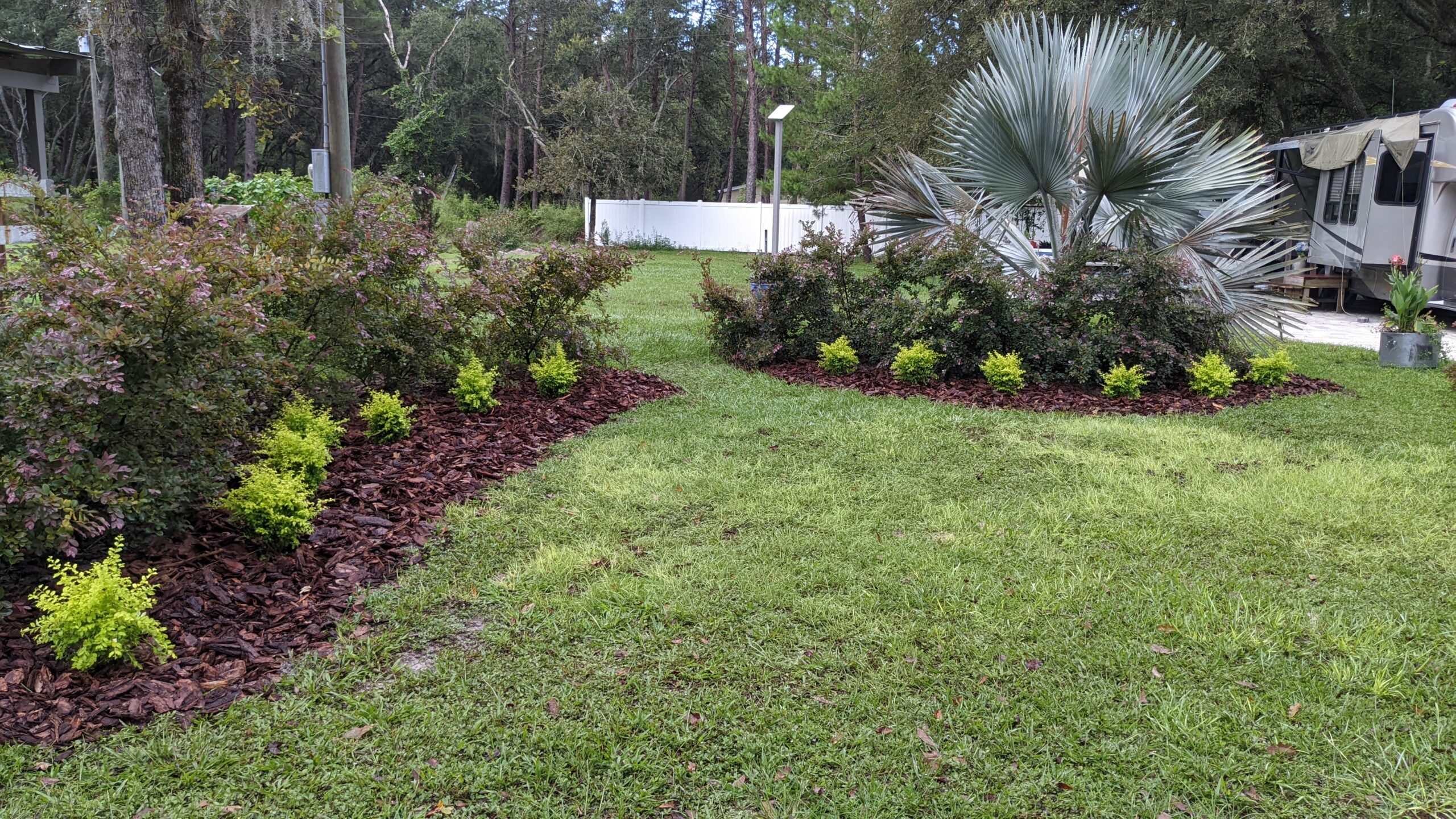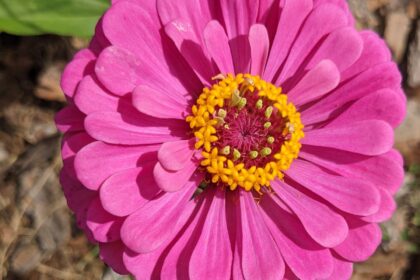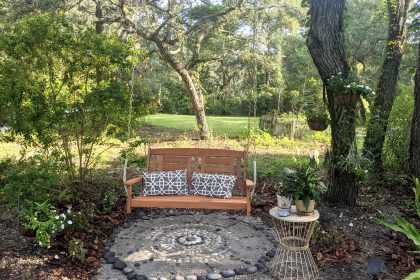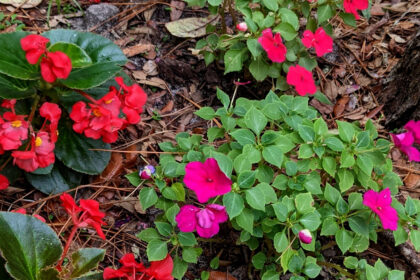I just purchased a new Peggy Martin (a.k.a. Hurricane Katrina) climbing rose. I have plenty of room for bush roses, but not a lot of sunny locations for climbers. (This is what I get for purchasing roses because I want them… before I know where I am going to put them ;-))
While I was digging up the boxwood bed for my new Mrs. B.R. Cant roses, I caught the former horse stall in my periphery and noticed two naked posts that support horizontal timbers holding up the metal roof. That would be a perfect place for Ms. Martin! It has a southern and eastern exposure and would have oodles of room to ramble. She would also take a somewhat drab area and give it that gorgeous pink cluster bling. The only problem is that my son uses this space to park his car, giving it protection from the hot Florida sun. When I told him I was planting a rose there, he said “cool.” Little does he know this plant is a glorious BEAST. (I should have reminded him of my Englis Ivy hanging tower of babylon that nearly hangs to the ground from a 15-foot tall branch, but I didn’t. lol) This rose is known to bust metal arbors. That’s why I need it on a sturdy wood structure and not on a weak vinyl or metal trellis. Once it starts going into “steroid mode,” I will just have to strap up the canes or prune them back. Peggy Martin responds well to deep prunings.
I’m sure you have heard the story before, but it’s worth noting here. According to my research, this rose is nicknamed the Hurricane Katrina rose because it survived under 20-feet of saltwater for two weeks after the destruction caused by the Category 5 storm. The rose was located in the garden of Ms. Peggy Martin, south of New Orleans in Plaquemines Parrish. Quite the survivor story!
These beautiful, yet tough roses are a southern favorite. They grow from 6-15-feet tall and wide with semi-thornless canes. There is some debate as to whether or not they are fragrant… so I’ll just have to wait until they bloom to give you my opinion. They propagate easily, so I can’t wait to make cuttings for the second southern facing post.
It’s weird because I didn’t notice the chlorosis (yellowing leaves) until I captured this video. Guess I have to break out the iron chelate and let you know how that goes.
Training roses to climb a post
At first, I thought I would get a fan or vertical trellis and affix it to the post. I rejected that proposition in favor of just training the Peggy Martin rose to grow up the post, allowing it to ramble north along the eastern cross-beam and west along the southern. That horse stall isn’t the most attractive structure, so I thought this would help beautify the space.
I was going to use natural twine but was concerned it wouldn’t be strong enough. Roses lack tendrils and need help to bloom prolifically, since they produce flowers only on lateral canes growing from 0-45-degrees. If you trellis canes at 90-degrees (vertically), that sends a signal to the plant to spend its energy as a support cane and this prohibits blooming.
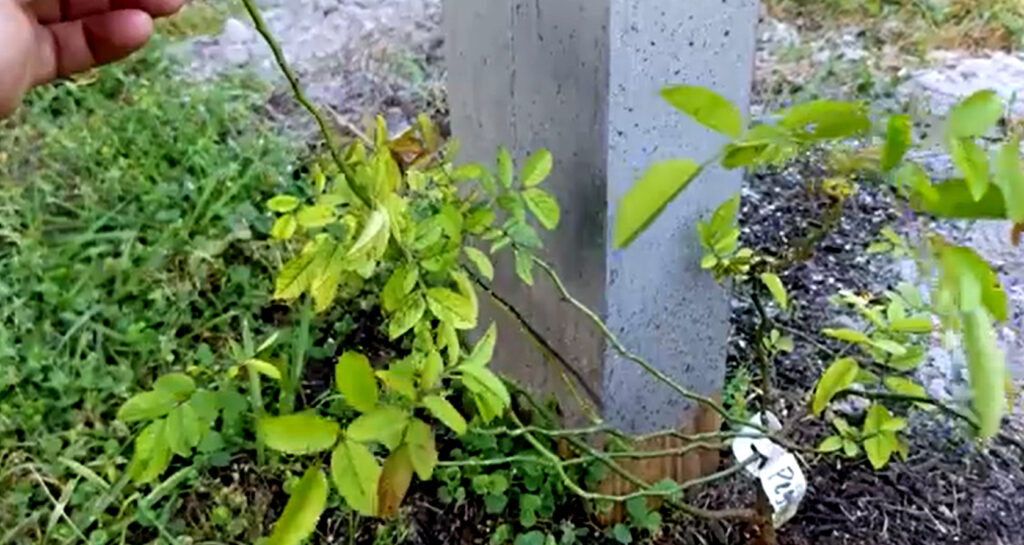
Some people use zip ties, metal wire for support, or pantyhose (a better option in my opinion). I opted to use plastic stretchy garden tie ribbon purchased a Lowes. My hope is that it supports the canes until it can wrap around the roof timber and hold itself up. The ribbon claims to be sturdy, and I like that it expands allowing it to continue to support even while the canes grow. If that doesn’t work well to start, I’ll come back in and tie this down with nylons.
Since this is a baby plant, the canes are flexible and easy to bend. Working my way up from the bottom, I take the longest and start to wrap it around the post, tying it up so that it is close to horizontal or at most a 45-degree angle. I take care to spiral going both clockwise and counterclockwise and can put two or three canes through one wrap. Don’t capture the leaves under the ribbon so as to give the plant the best chance for photosynthesis. I repeat the process until all the canes that are capable of reaching the ties, is wrapped securely.
After that, I’ll continue to monitor growth, securing the branches as they grow.
I’ll keep you posted on the progress. In the meanwhile, happy gardening!
